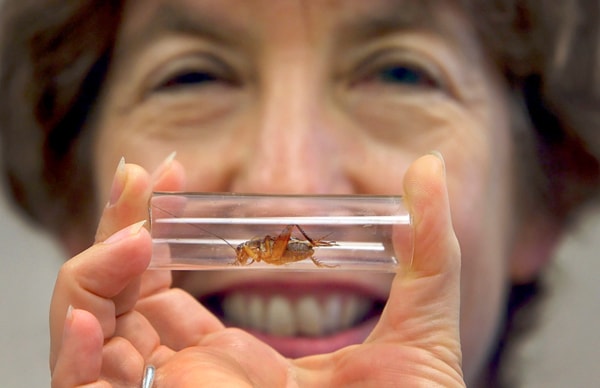In 1991, when Marlene Zuk visited Hawaii, she did what every visitor to the islands wants to do.
“I said, ‘I’ll see if there are any crickets there that I can dissect for parasites,’” she said. “Doesn’t everyone?”
Zuk, a biology professor at the University of California, Riverside, studies crickets along with some other animals. She recently published Sex on Six Legs, her third book about the sex lives, and other interesting behaviours, of insects. The book details intriguing elements of the bug world, such as how the genitals of male honeybees explode after they have sex, how mother earwigs care for and feed their young, and how a particular female wasp poisons the brain of a cockroach just enough so that she can use its antennae to steer it to her nest, where it becomes food for her brood.
“The more you understand about (insects), the more you understand the different ways that life exists,” she said. “And I think understanding that is tremendously important.”
Zuk gained attention several years ago when she reported on a pair of male penguins who had formed the kind of pairing that a male and female would form. Since then, such behaviour has been reported in a number of species.
Currently she is hoping to receive a grant to study the albatross. Up to 30 per cent of albatross pairings, she said, are female-to-female pairings. Typically, she said, one or both of the females will mate with a male in order to produce a fertile egg. But the young will be raised by the female pair.
“You look at a pair of birds and people assume it’s a mommy and daddy,” she said. “And guess what? It’s not. Who knew?”
Zuk’s trip to Hawaii presented a unique opportunity, she said. Primarily, she was travelling to the big island for a conference. But she went a few days early just to take advantage of the local fauna.
She and her husband donned headlamps and spent an evening hunting crickets in the grass lawns of the University of Hawaii in Hilo. What interested her, she said, was that even though the bugs were plentiful, they weren’t chirping.
It turned out, the cricket population was susceptible to a parasitic fly attracted by the whir of the cricket’s wings. The flies lay eggs on the exterior of the cricket’s body. When they hatch, the larvae burrow into the cricket, consuming it from the inside out.
Eventually, she said, “Alien-like, they burst from the body of the cricket.”
Unfortunately, the chirping that attracts the flies is the same sound that attracts female crickets to male crickets so they can mate. What is interesting, she said, is the way in which the crickets have adapted. Within the space of 20 generations, about five years, a gene mutation has been expressed that results in an altered wing shape that prevents the cricket from singing.
It’s an instance, she said, of “extremely rapid evolution.”
Her task now is to figure out how the males are able to attract mates without being able to sing.
She expects the answer may be as fascinating as some of the other insect behaviour she has observed during her career. Bugs, she said, exhibit many of the traits we often assume are limited to humans and higher mammals.
Ants and bees, she said, have complex hierarchical social systems. Bees communicate the location of a nectar source by tracing out symbols. Ants keep “herds” of aphids, moving them from place to place and milking the honeydew they produce.
“There’s this fascination of, how do they do all of this convoluted stuff?” she said. “How is that possible when they have a brain the size of a poppy seed?”
Some insects, she said, even exhibit the basic traits of personality, behaving independently to certain stimuli.
“If humans aren’t the only ones with personality, what does that mean?” she asked.
But she is very careful to shy away from anthropomorphizing insect behaviour, or that of any other species. Similar behaviour, she said, does not necessarily arise along similar pathways or from similar motivations.
“In drosophila, which are fruit flies, it turns out if one gene is changed in the males, they will end up courting both other males and other females,” she said. “People are like, ‘Oh, we’ve discovered the gay gene.’ Of course not.”
However, she said, it does suggest other ways of looking at sexual expression. “It makes you question this whole idea that people have,” she said.
